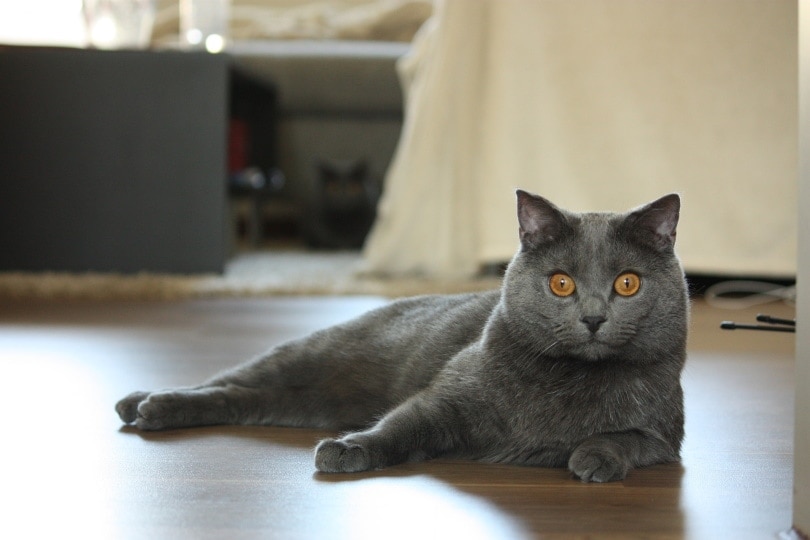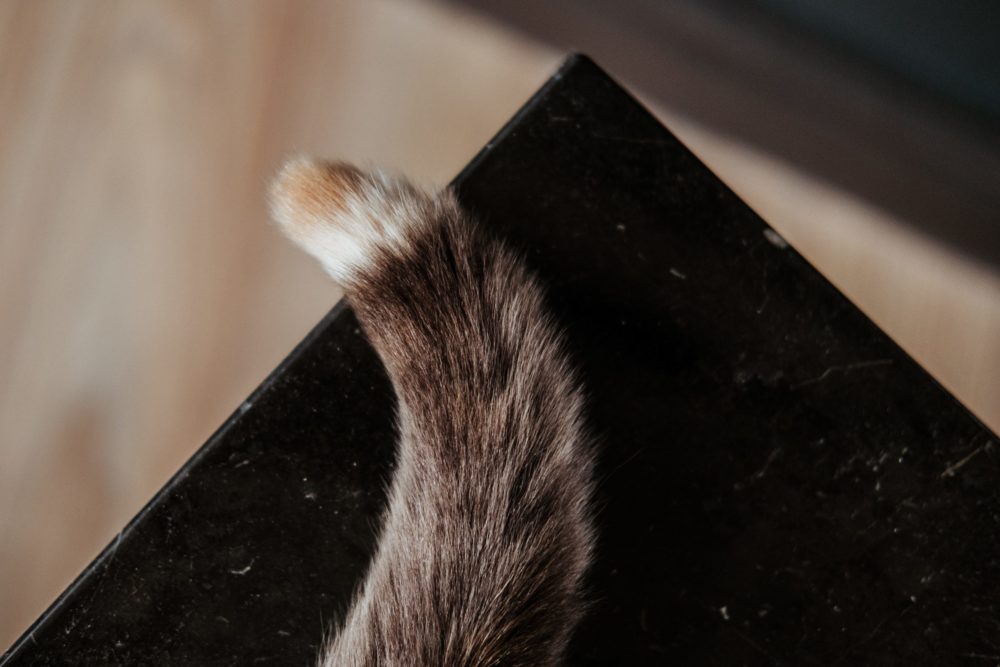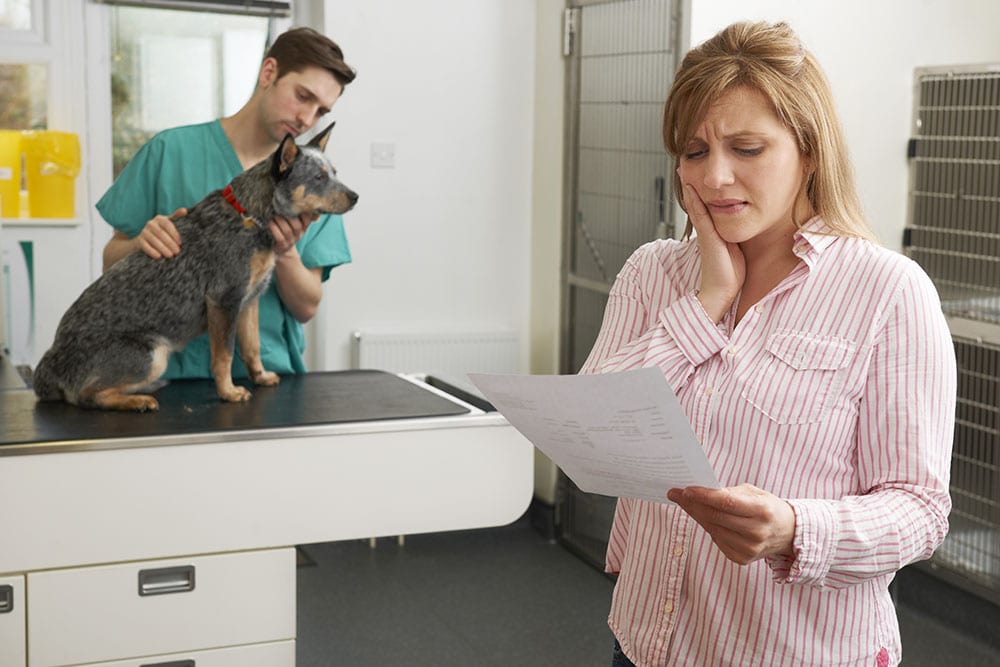Are Rubber Plants Toxic to Cats? Keeping Your Cat Safe
Updated on
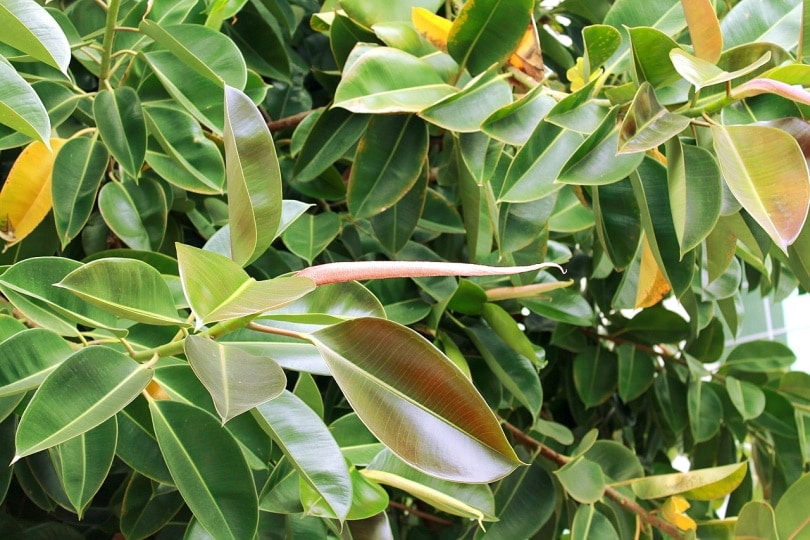
For those who enjoy keeping live plants and pets in the same home, it’s important to know which plants pose a threat to cats and dogs to ensure their safety. Rubber plants are popular houseplants loved by many for their distinct, waxy foliage and overall beauty.
The short answer is that rubber plants are toxic to cats. Some varieties of rubber plants are more toxic than others. In this article, we’ll cover everything related to the toxicity of rubber plants and whether they should be kept in the same house as your pets.
Rubber Plants
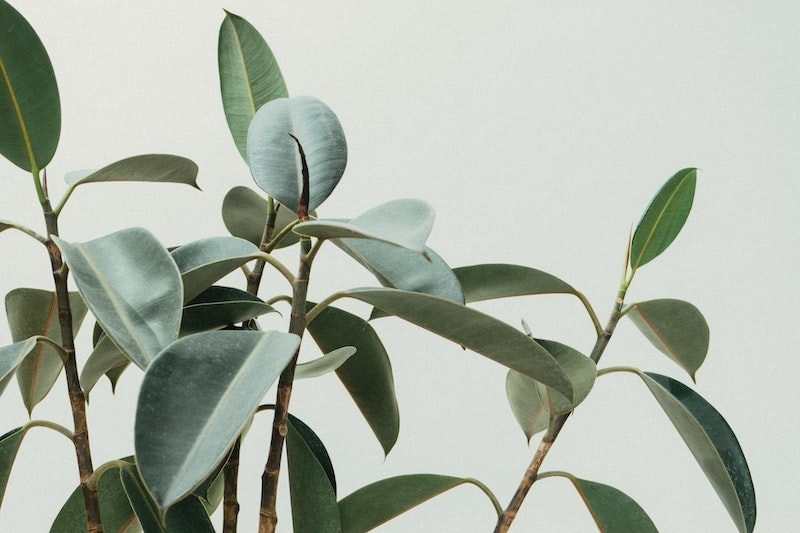
Rubber plants, or Ficus elastica, are also commonly called rubber trees, rubber figs, and rubber bushes. It is a species of flowering plant that’s native to Southeast Asia. Rubber plants belong to the plant family Moraceae, a group of tropical flowering plants with over 1100 species.
The leaves have a waxy, distinguishable appearance. Though some plants can reach 6 to 10 feet once fully matured, they are very popular houseplants.
Rubber plants prefer bright light but are highly adaptable. They can also thrive in low-light conditions. This, besides their beauty and the fact that they function well in average room temperatures, makes them ideal for anyone who enjoys displaying live plants in their home.
Types of Rubber Plants
While there are many varieties of rubber plants, we have included a list of the most common types kept as houseplants.
Abidjan- The Abidjan has large glossy leaves with a burgundy-bronze hue. This variety is famous for its ability to filter and purify indoor air.
Black Prince- The dark green leaves of this rubber plant appear black, hence the name. It thrives in bright, indirect sunlight.
Burgundy- The burgundy rubber plant has thick foliage colored burgundy to black with noticeable red stems. For the most vibrant foliage, it requires bright light and enough humidity.
Decora- Decora is well known for its thick, shiny, dark green leaves that grow up to one foot in length. They are commonly displayed in basket planters and are well-loved as indoor houseplants.
Doescheri- The doescheri is popular for its unique, evergreen blotched foliage and narrow, creamy-white hue edges.
Melany- The Melany has deep, glossy green leaves with burgundy highlights. It grows very dense and does best in lower light conditions.
Red Ruby- The red ruby has large dark green foliage with varying red, purple, and white hues. New leaves appear in a shade of pinkish-red.
Robusta- Robusta is a hardy variety of Ficus elastica with leathery, large green leaves. It can withstand lower humidity indoors and reaches up to 6 feet when fully mature.
Tineke- The Tineke is commonly used in small planters and has dark and light green patchy leaves with cream-colored margins and pink stems.
Tricolor- The tricolor rubber plant has variegated, thick, leathery leaves with a distinct waxy surface. The foliage combines green, pink, and cream, hence the name tricolor.
Yellow Gem- This rubber plant is very easy to grow and is typically placed in large planters. The leathery, green-centered leaves have a golden-green hue around the borders.
Rubber Plant Toxicity
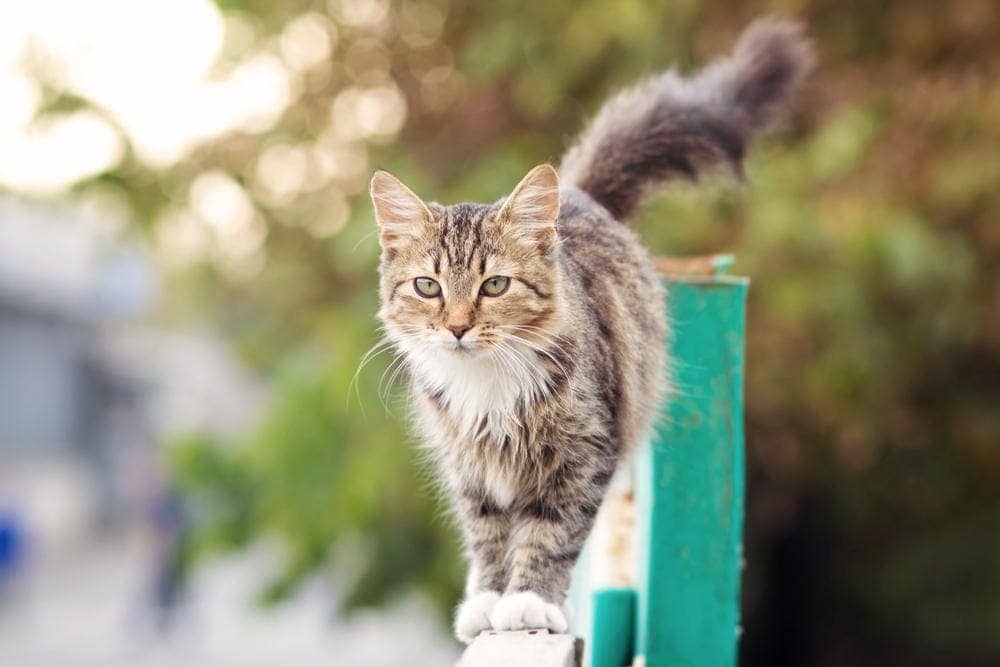
Rubber plants secrete toxins as a safeguard against being consumed. The sap is secreted when the leaves are damaged. Also known as plant latex, the sap is found in all Ficus species. Interestingly, the latex used in gloves is derived from the rubber plant, which is known for causing allergic reactions in some humans.
Toxicity Class
Plants do not have to be fatal to be considered toxic. Toxicity covers a vast spectrum of potential poisonous effects. The University of California has placed rubber plants in toxicity class 4, which is the least-dangerous class of four categories regarding human safety. Keep in mind the effects of toxicity between humans and animals can vary greatly. So, let’s look further into rubber plants’ toxicity and their effects on cats specifically.
Symptoms of Rubber Plant Toxicity in Cats
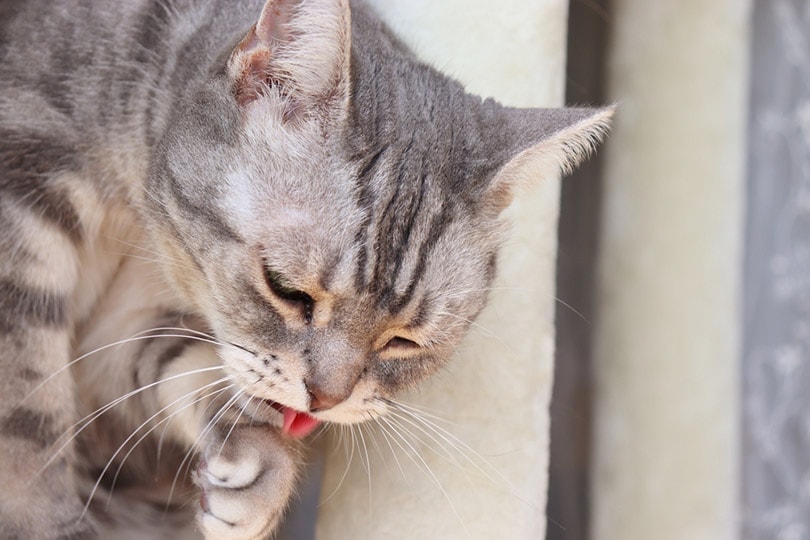
If your cat has ingested a rubber plant, irritation of the mouth and gastrointestinal tract can occur. Skin irritation is also possible if the sap gets on the cat’s skin. Thankfully, rubber plants are not as dangerously toxic as other plant varieties and typically are not fatal, especially if only a small amount is ingested.
Regardless, the best course of action is to contact your veterinarian as soon as possible for guidance on handling the situation. The symptoms of rubber plant toxicity include:
- Decreased appetite
- Drooling
- Vomiting
- Diarrhea
- Skin irritation
American Rubber Plant
We have some good news for fans of the American Rubber Plant. These smaller, perennial plants are of a different classification and are not toxic to cats or dogs. Peperomia obtusifolia is the scientific name of the little evergreen.
It’s known for its leathery, glossy cupped leaves (similar to other rubber plants) and green to white flowers. Other names are the Baby Rubber Plant, Pepper Face, and Oval-Leaf Peperomia.
Keeping Your Cat Safe from Toxic Plants

There is no greater tool for keeping your cat safe from the effects of toxic plants than to educate yourself on which species of plants are safe and which are poisonous.
Since toxicity levels vary according to different species of plants, it’s imperative that you know the danger each plant can pose to your cat, especially if you have the plant in your home. Below, we have included tips on how to keep your cat as safe as possible.
Avoid Toxic Plant Varieties
The most obvious way to keep your cats safe from plant poisoning is by choosing not to keep the toxic varieties in your home. If you have an outdoor cat, be aware of the plants in your yard and neighboring yards.
If you notice any toxic plants are among them, consider installing a fence or monitoring your cat more closely. If you already have toxic plants in your home that you don’t plan on getting rid of, you can try some of the tips below. Make sure to keep your emergency veterinary service number close by in case of ingestion.
Keep Plants Out of Reach
For the safety of cats and plants in the home, try displaying them out of reach of your cat. This goes for any plant, as even the non-toxic varieties will appreciate being kept far away from those kitty teeth and claws.
If you get creative, you can keep them out of reach and beautifully displayed in your home.
Citrus Deterrent
Citrus is commonly used as a deterrent for cats due to its unpleasant smell. You can try spraying your plants with citrus to keep them from wanting to go anywhere near them. Be careful since the acid in citrus can harm some plants. It may also be irritating to your cat’s little nose.
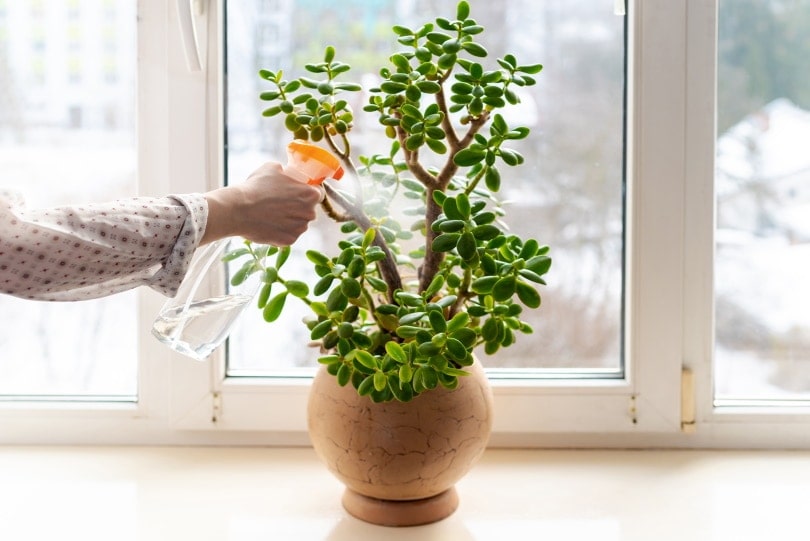
Spray Bottle Deterrent
Try using a spray bottle of water and give them a quick spray each time they approach household plants. This may not work for all cats, but it is worth a try. The downside is that you will not always be available to use this trick on your cat.
Try Cat Grass or Catnip
You can go online or to your local pet store and purchase catnip or cat grass. The plants are perfectly safe for cats to chew on and eat. They are easy to grow and don’t require much of a green thumb.
Trim the Plants
Keeping your plants well-trimmed regularly, especially those that hang or have dangling foliage, may keep your curious kitty from being enticed by them.
Create a Plant Room
Some cat owners have set aside space for a plant room in their homes. Of course, not everyone will have this extra space, but it’s an idea for those that do.
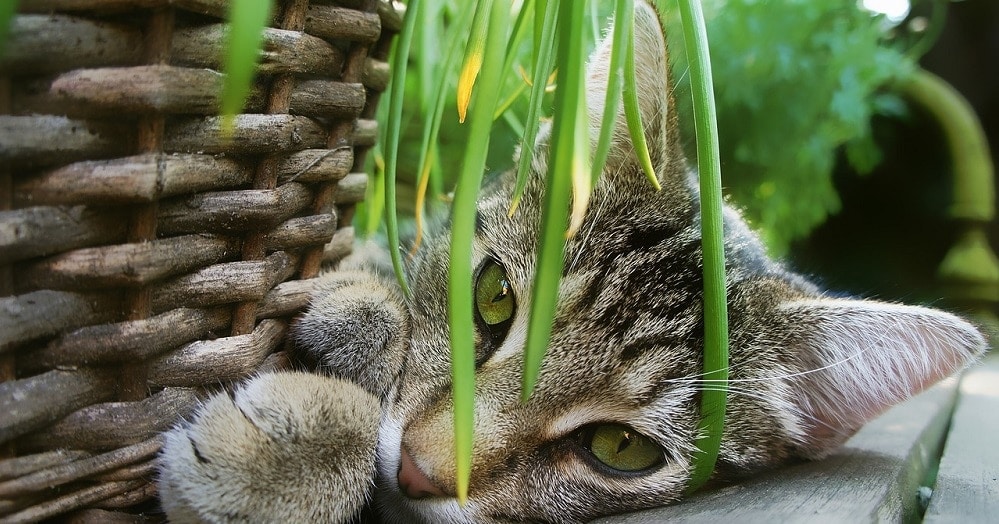
Buy Artificial Plants
If you only display plants in the home for décor purposes but share your life with a loveable cat, you can go shopping for artificial plants to display. They are non-toxic and can give you peace of mind. Many plants that are toxic to cats have artificial versions that look exactly like them.
Conclusion
Rubber plants are toxic to cats, and you should contact your veterinarian if your cat has ingested their leaves or stems. They are not as toxic as some other species, and the reaction is typically not fatal. However, they can still cause severe irritation of the mouth, digestive system, and skin. The good news is there are plenty of ways to keep your cat safe from poisonous plants.
See also:
- Are Air Plants Toxic to Cats? Keeping Your Cat Safe
- Are Corn Plants Toxic to Cats? Keeping Your Cat Safe
Featured Image Credit: tortic84, Pixabay



